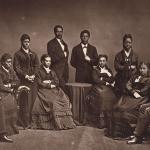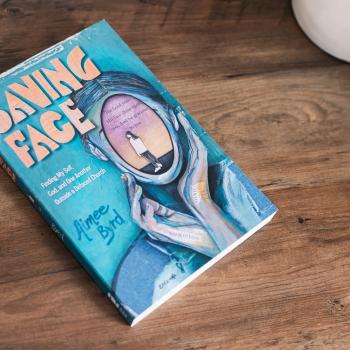
The history of women’s rights in the U.S. over the past century is often presented in both popular and academic narratives as inextricably connected to women’s sexual liberation, made possible by the Pill and by widespread access to abortion. Both, as the popular feminist arguments go, were non-negotiable for women’s ability to achieve any semblance of equality to men in both their professional and personal lives. For example, in her 2011 book, Bachelors and Bunnies: The Sexual Politics of Playboy, historian Carrie Pitzulo shows that Hugh Hefner, the controversial founder of Playboy magazine, claimed—and seems to have genuinely believed—that his publication was advancing women’s rights by giving women a chance to be truly and fully free, albeit in a very particular kind of way.
Much has changed since 2011. The Me Too movement, in particular, challenged and complicated the earlier narratives trumpeting sexual liberation’s positive impact on women’s rights. Indeed, several studies over the past decade have documented the damaging impact of the sexual revolution on women. Examples include Mary Eberstadt’s Adam and Eve after the Pill: Paradoxes of the Sexual Revolution and Christine Emba’s Rethinking Sex: A Provocation.
Erika Bachiochi’s recent book, The Rights of Women: Reclaiming a Lost Vision, presents an important contribution to this category of studies, providing key historical background for modern debates over women’s rights while also bringing in her expertise as a legal scholar, and making some practical recommendations for moving forward—or, rather, productively moving backward to embrace the ideals of an earlier thinker. Her starting point and, really, touchstone throughout the book is Mary Wollstonecraft, whose A Vindication of the Rights of Woman is generally viewed as the first feminist manifesto.

A typical history textbook might place Wollstonecraft at the beginning of a straight line in the history of modern feminism, proceeding from her writings to Seneca Falls, A Room of One’s Own, the Nineteenth Amendment, the Pill, Betty Friedan’s The Feminine Mystique, and the debates over abortion—is it an instrument of liberation or of ultimate oppression of women’s bodies?—that continue into our present.
Indeed, the idealization in some circles of sexual liberation and access to abortion as the pinnacle of women’s rights provoke the question at the heart of Bachiochi’s book: how did the movement for women’s rights, originally so staunchly pro-family and pro-life, go so spectacularly off the rails in the past half-century? This is certainly the question that Mary Wollstonecraft would have asked as well, had she been given a glimpse into the lives and arguments of the modern feminists who claim to be her intellectual descendants.
Bachiochi’s examination of Wollstonecraft’s philosophical writings and their legacy provides a more satisfying and complex history of the development of women’s rights in modern U.S., and one that doesn’t consider it inevitable for women to embrace the promiscuity that has too often been considered a symbol of empowerment. In the process, it turns out that Mary Wollstonecraft herself was a much more complicated a figure than most think, or that her own tragic and somewhat scandalous life story suggests at first glance.
Wollstonecraft was abandoned to single motherhood by a man she never officially married because of concern over the injustice of contemporary marriage laws. She then married one William Godwin, but died shortly after, at the age of thirty-eight, mere days after giving birth to her second child, the future writer Mary Shelley.
Our modern individualism predisposes us to consider the focus of Wollstonecraft’s treatise to be individual women’s rights, which are indeed prominently featured in the work’s title. That is not the case, however. The key for Wollstonecraft—and, therefore, for Bachiochi in this book—is the place of timeless virtues, such as temperance and self-mastery, in the development of moral character in individuals, men and women alike.
In an ideal society, Wollstonecraft argued, men and women would dedicate their lives to growing in the virtues, and the most natural place for this to happen is in the context of the home. Parenting children within a loving marriage should be an essential part of this schooling in the virtues, pushing both parents toward further life-long growth. At the same time, this family context would also provide irreplaceable education in the virtues for the next generation. Replicated in myriad families across a country, the process will produce a virtuous republic.
Wollstonecraft’s vision did not come to fruition in her own personal life nor in any human society ever in existence. Still, it made a lasting impact both on some of her contemporaries—most notably Abigail Adams—and feminists thereafter. But the question of the role of the home and the extent to which it should be uniquely or mostly women’s sphere continued to divide thinkers, as increasingly more acrimonious debates arose in the nineteenth century and beyond about voluntary motherhood, women’s work outside the home, and women’s political involvement. This is the story to which Bachiochi turns in the second portion of the book.
As Bachiochi notes, “Often the modern feminist movement is rendered, by fan and foe alike, as a movement in favor of traditionally ‘male’ work and away from traditionally ‘female’ work. But it would be better understood as a shift from priority given to the goods of the home to the goods of the market.” This affected, for instance, debates over the concept of a “living wage” that could support a family, allowing the mother to remain at home with the children, should she so choose.
On the opposite side were those arguing for not imposing a maximum limit on the number of hours a woman could work or a minimum on the wages she had to be paid, in order to allow women to be competitive in entering the work force. As this particular example from the book shows, a significant strand in the story of women’s rights was also the question of whether women should be seen first and foremost as individuals or as integral members of their families and, especially, care-takers of vulnerable children.
The story Bachiochi presents in documenting these political and legal debates reveals that, perhaps, the greatest stumbling block in fulfilling the Wollstonecraftian ideal of the virtuous home, with its husband and wife growing together as they raised their children to be virtuous future citizens, is the commonplace absence of such virtues in both men and women. This is particularly visible, Bachiochi notes, in women’s advocacy for abortion rights: “That women… who wielded the power of the vote, greater educational opportunities, and more rights and privileges still, would find it necessary to advocate for abortion revealed perhaps that the women’s movement had not made the advances their predecessors thought they would. Or perhaps the women’s movement made a wrong turn along the way.”
In many ways, the focus on abortion politics, as the book’s narrative moves into the past half-century, pairs naturally with Alasdair MacIntyre’s After Virtue: A Study in Moral Theory. What happens when people, men and women alike, abandon the virtues? Perhaps, it appears, they may find individual rights. But these individual rights will not make them happy or fulfilled, because people were not made to live as individuals making life-changing decisions alone. And so, as many women found to their chagrin, getting an individual right to bodily privacy, as recognized by Roe, but without communal, professional, or societal support to parent a child, was not much of a choice after all.
Bachiochi concludes the book with an insightful chapter presenting potential policies that would promote a Wollstonecraftian vision of women’s rights today. These are, unsurprisingly, policies that would be best described as holistically family friendly—including but not limited to better federal maternity and paternity leave, opportunities for parents to have flexible work schedules while their children are small, tax breaks for families with children, more community support structures for families, and overall greater cultural respect for the importance of the work that parents do in the home. And since abortion continues to be strongly correlated with poverty, these policies will also quite literally save lives—something that the Supreme Court’s repeal of Roe has only achieved to a marginal degree so far. Indeed, as of this month, abortion pills are now readily available at major pharmacies.
Overall, the vision Bachiochi presents is one that is inspiring and aligns well with the latest sociological research on marriage and family. But as with all solutions that require changing cultural norms, this is one that is likely to be a significant uphill battle. Indeed, as the surprisingly critical review of Bachiochi’s book in the usually conservative-friendly First Things magazine shows, support for this vision is likely to face a steep climb even among some who are pro-family in theory. And yet, if there ever is to be a genuine “Benedict option” in response to the very real crisis in our virtue-less society that MacIntyre bemoaned, I am increasingly convinced that it should look more like Bachiochi’s vision than Rod Dreher’s.













